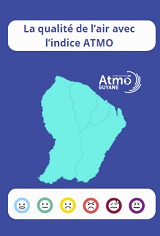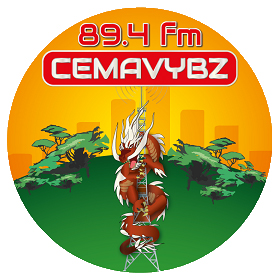Blada.com
dimanche 09 novembre
Boîtes aux lettres
Courrier des lecteurs
Petites annonces
Emploi / Formation
Covoiturage
Infos citoyennes
Infos citoyennes
29/01/23
La coopération sanitaire avec le Suriname va se renforcer
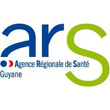 Le ministre surinamais de la Santé était en visite hier au Chog. Amar Ramadhin et Alexandre de la Volpilière, directeur général adjoint de l’ARS, se sont engagés à approfondir la coopération de part et d’autre du Maroni. Si l’hôpital de Saint-Laurent du Maroni est déjà bien engagé, il s’agit d’étendre cette coopération aux autres hôpitaux, aux CDPS, aux futurs hôpitaux de proximité, à la recherche, à la santé publique et aux questions de santé-environnement.
Le ministre surinamais de la Santé était en visite hier au Chog. Amar Ramadhin et Alexandre de la Volpilière, directeur général adjoint de l’ARS, se sont engagés à approfondir la coopération de part et d’autre du Maroni. Si l’hôpital de Saint-Laurent du Maroni est déjà bien engagé, il s’agit d’étendre cette coopération aux autres hôpitaux, aux CDPS, aux futurs hôpitaux de proximité, à la recherche, à la santé publique et aux questions de santé-environnement.
 Depuis juillet, un agent des services de l’état-civil surinamais est en poste au Centre Hospitalier de l’Ouest Guyanais (Chog). Il s’assure de la conformité des documents d’identité des femmes venues accoucher à Saint-Laurent du Maroni depuis l’autre rive du fleuve. C’est un des nombreux exemples de la coopération entre l’établissement et les autorités surinamaises, impulsée notamment par le Dr Fredrik Terlutter. Hier, le Dr Amar Ramadhin, ministre surinamais de la Santé, a profité d’une visite au Chog pour signer avec l’ARS de Guyane représentée par Alexandre de la Volpilière, une déclaration d’engagement à approfondir cette coopération sur l’ensemble de la frontière. Il s’agit de ne pas se limiter au Chog mais d’inclure aussi les autres hôpitaux du territoire, les centres délocalisés de prévention et de soins (CDPS) et les futurs hôpitaux de proximité de Maripasoula et Grand-Santi, les chercheurs, la santé publique, la santé environnement…
Depuis juillet, un agent des services de l’état-civil surinamais est en poste au Centre Hospitalier de l’Ouest Guyanais (Chog). Il s’assure de la conformité des documents d’identité des femmes venues accoucher à Saint-Laurent du Maroni depuis l’autre rive du fleuve. C’est un des nombreux exemples de la coopération entre l’établissement et les autorités surinamaises, impulsée notamment par le Dr Fredrik Terlutter. Hier, le Dr Amar Ramadhin, ministre surinamais de la Santé, a profité d’une visite au Chog pour signer avec l’ARS de Guyane représentée par Alexandre de la Volpilière, une déclaration d’engagement à approfondir cette coopération sur l’ensemble de la frontière. Il s’agit de ne pas se limiter au Chog mais d’inclure aussi les autres hôpitaux du territoire, les centres délocalisés de prévention et de soins (CDPS) et les futurs hôpitaux de proximité de Maripasoula et Grand-Santi, les chercheurs, la santé publique, la santé environnement…
C’est déjà en partie le cas. Béatrice Pesna, cadre de santé du CDPS de Grand-Santi, a évoqué pour sa part le travail mené des deux côtés de la frontière pour le suivi des personnes vivant avec le VIH ou la vaccination. En fin d’année, des chercheurs des deux territoires ont co-signé un article sur la situation du VIH sur le Maroni. En matière de lutte contre le paludisme, le projet Malakit a été l’occasion de faire travailler des professionnels des deux pays à la lutte contre le paludisme. En décembre 2021, la visite d’une délégation de médecins guyanais et de la directrice générale de l’ARS à Paramaribo, avait été l’occasion de nouer des liens avec les autorités sanitaires surinamaises.
Profiter de la perspective du CHRU
Avec la perspective du CHRU, les conditions d’un approfondissement de cette coopération sont réunies. Il s’agit d’ailleurs de la trente-neuvième recommandation du rapport de l’Inspection générale des affaires sanitaires (Igas) sur le renforcement de l’offre de soins en Guyane : « Renforcer les coopérations régionales dans les trois champs de la recherche, de la formation et de l’offre de soins, en particulier avec le Brésil et le Suriname, et doter à cet effet le GHT (Groupement Hospitalier de Territoire) d’une ingénierie dédiée. »
Côté surinamais, le ministère de la Santé travaille déjà sur plusieurs chantiers pour renforcer cette coopération : faire certifier au niveau international certaines de ses activités (radiothérapie, ophtalmologie, oncologie, neurochirurgie) pour pouvoir accueillir des patients européens, faciliter la reconnaissance de ses professionnels de santé avec des diplômes hors Union européenne, proposer des programmes d’échanges pour les étudiants en santé des deux territoires, renforcer la coopération scientifique… Nicolas de Lacoste, ambassadeur de France à Paramaribo, a insisté sur la nécessité de travailler la question du mercure. Dans certains villages du Haut-Maroni, la moyenne d’imprégnation mercurielle des femmes enceintes est supérieure aux limites fixées par l’OMS.
Recherche et formation en commun, échanges autour de cas complexes

Côté français, Nadia Sabbah, cheffe de service d’endocrino-diabétologie à l’hôpital de Cayenne, a confié son souhait de renforcer les travaux de recherche avec le Suriname et d’organiser des échanges d’étudiants : « Nos patients sont très différents de ceux en Europe. C’est aussi le cas au Suriname. Si nous avons des projets de recherche communs, avec de grandes cohortes, nous pourrons comparer et trouver de meilleurs outils de prévention. »
Hier après-midi, la visite des services du Chog a été l’occasion de proposer au ministre surinamais que les sages-femmes de Paramaribo viennent s’exercer dans la salle de simulation du Chog. Les pédiatres l’ont également sollicité pour nouer un contact avec leurs confrères de Paramaribo, autour du cas complexe d’un nourrisson surinamais actuellement hospitalisé à Saint-Laurent du Maroni.
« On ne part pas de zéro, rappelle Alexandre de la Volpilière. Il y a une longue tradition de coopération, parfois fragile parce qu’elle dépend de personnes. Il est important de pouvoir l’amplifier, de passer un nouveau cap à la hauteur des enjeux de la Guyane et du CHRU. » Dès la semaine prochaine, le Dr Amar Ramadhin poursuivra les discussions autour de la coopération : le ministre surinamais rencontrera le Pr Jérôme Salomon, Directeur Général de la Santé, en marge du conseil exécutif de l’OMS, à Genève.
 The Surinamese Minister of Health was visiting the Chog yesterday. Amar Ramadhin and Alexandre de la Volpilière, Deputy Director General of the ARS, are committed to deepening cooperation on both sides of the Maroni. If the hospital of Saint-Laurent du Maroni is already well underway , it is a question of extending this cooperation to other hospitals, CDPS, future local hospitals, research, public health and health-environment issues.
The Surinamese Minister of Health was visiting the Chog yesterday. Amar Ramadhin and Alexandre de la Volpilière, Deputy Director General of the ARS, are committed to deepening cooperation on both sides of the Maroni. If the hospital of Saint-Laurent du Maroni is already well underway , it is a question of extending this cooperation to other hospitals, CDPS, future local hospitals, research, public health and health-environment issues.
 Since July, a Surinamese civil status officer has been on duty at the Center Hospitalier de l’Ouest Guyanais (Chog). It ensures the conformity of the identity documents of women who come to give birth in Saint-Laurent du Maroni from the other side of the river. This is one of the many examples of cooperation between the establishment and the Surinamese authorities, driven in particular by Dr Fredrik Terlutter. Yesterday, Dr Amar Ramadhin, Surinamese Minister of Health, took advantage of a visit to the Chog to sign with the ARS of Guyana represented by Alexandre de la Volpilière, a declaration of commitment to deepen this cooperation on the whole of the border. It is a question of not being limited to the Chog but also of including the other hospitals of the territory, the delocalized prevention and care centers (CDPS) and the future local hospitals of Maripasoula and Grand-Santi, the researchers, the public health, environmental health, etc.
Since July, a Surinamese civil status officer has been on duty at the Center Hospitalier de l’Ouest Guyanais (Chog). It ensures the conformity of the identity documents of women who come to give birth in Saint-Laurent du Maroni from the other side of the river. This is one of the many examples of cooperation between the establishment and the Surinamese authorities, driven in particular by Dr Fredrik Terlutter. Yesterday, Dr Amar Ramadhin, Surinamese Minister of Health, took advantage of a visit to the Chog to sign with the ARS of Guyana represented by Alexandre de la Volpilière, a declaration of commitment to deepen this cooperation on the whole of the border. It is a question of not being limited to the Chog but also of including the other hospitals of the territory, the delocalized prevention and care centers (CDPS) and the future local hospitals of Maripasoula and Grand-Santi, the researchers, the public health, environmental health, etc.
Part of it already. Béatrice Pesna, health manager of the CDPS of Grand-Santi, spoke for her part of the work carried out on both sides of the border for the follow-up of people living with HIV or vaccination. At the end of the year, researchers from the two territories co-authored an article on the HIV situation in the Maroni. In terms of the fight against malaria, the Malakit project was an opportunity to bring professionals from both countries to work in the fight against malaria. In December 2021, the visit of a delegation of Guyanese doctors and the Director General of the ARS to Paramaribo was an opportunity to forge links with the Surinamese health authorities.
Enjoy the perspective of the CHRU
With the perspective of the CHRU, the conditions for deepening this cooperation have been met. This is also the thirty-ninth recommendation of the report of the General Inspectorate of Sanitary Affairs (Igas) on strengthening the healthcare offer in French Guiana: " Strengthen regional cooperation in the three fields research, training and healthcare provision, in particular with Brazil and Suriname, and to provide the GHT (Territorial Hospital Group) with dedicated engineering for this purpose. »
On the Surinamese side, the Ministry of Health is already working on several projects to strengthen this cooperation: to have some of its activities certified at international level (radiotherapy, ophthalmology, oncology, neurosurgery) to to be able to welcome European patients, to facilitate the recognition of its health professionals with diplomas outside the European Union, to offer exchange programs for health students from the two territories, to strengthen scientific cooperation... Nicolas de Lacoste, French Ambassador to Paramaribo , insisted on the need to work on the issue of mercury. In some villages of Haut-Maroni, the average mercury impregnation of pregnant women is higher than the limits set by the WHO.
Joint research and training, exchanges around complex cases

On the French side, Nadia Sabbah, head of the endocrine-diabetology department at Cayenne hospital, shared her desire to strengthen research work with Suriname and to organize student exchanges: “Our patients are very different from those in Europe. This is also the case in Suriname. If we have joint research projects, with large cohorts, we can compare and find better prevention tools. »
Yesterday afternoon, the visit to the Chog services was the occasion to propose to the Surinamese Minister that the midwives of Paramaribo come to practice in the simulation room of the Chog. Pediatricians have also asked him to establish contact with their colleagues from Paramaribo, around the complex case of a Surinamese infant currently hospitalized in Saint-Laurent du Maroni.
We don't start from scratch, recalls Alexandre de la Volpilière. There is a long tradition of cooperation, sometimes fragile because it depends on people. It is important to be able to amplify it, to take a new step to meet the challenges of Guyana and the CHRU. » As of next week, Dr Amar Ramadhin will continue discussions on cooperation: the Surinamese Minister will meet Pr Jérôme Salomon, Director General of Health, on the sidelines of the WHO Executive Board, in Geneva.
Raccourcis

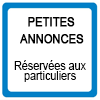
passer une petite annonce

passer une annonce de covoiturage


passer une annonce d’emploi

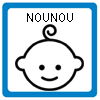
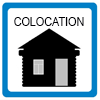
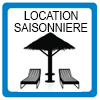

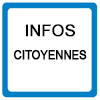

associations, postez vos actualités

participez au courrier des lecteurs
La Guyane c’est ici
La qualité de l’Air avec
ATMO
Photothèque

Lancements 2022
Vol 259 Ariane 5



